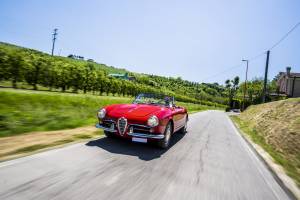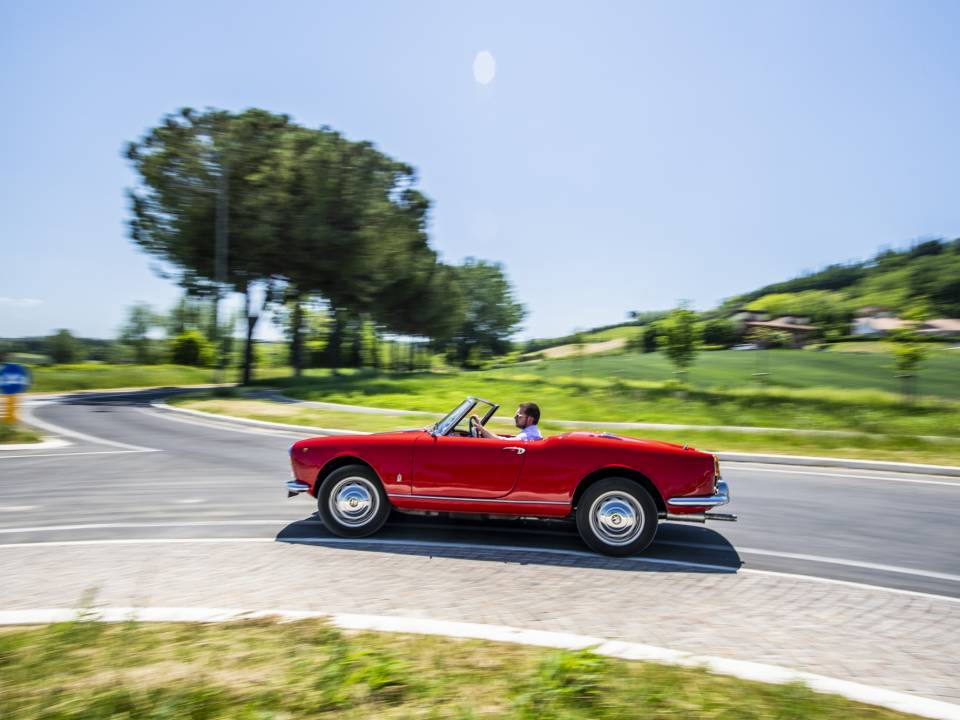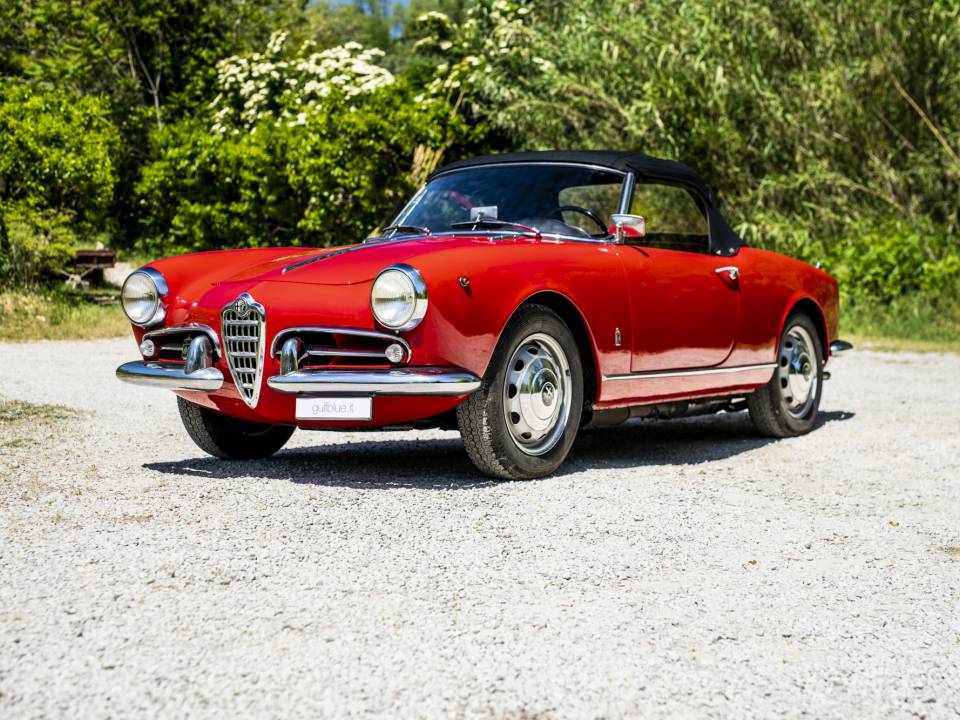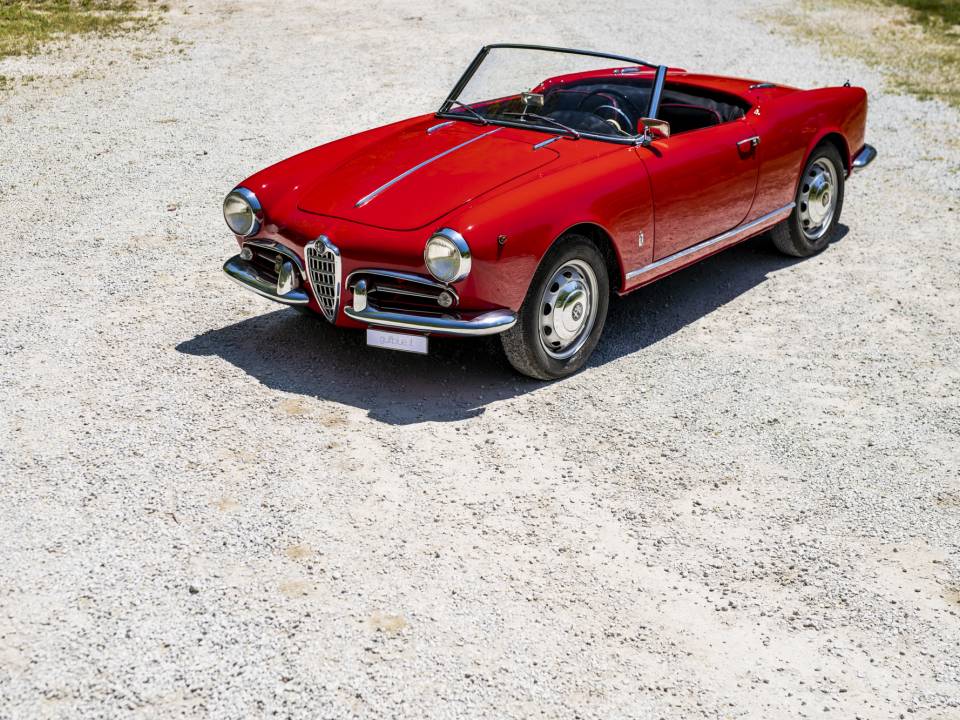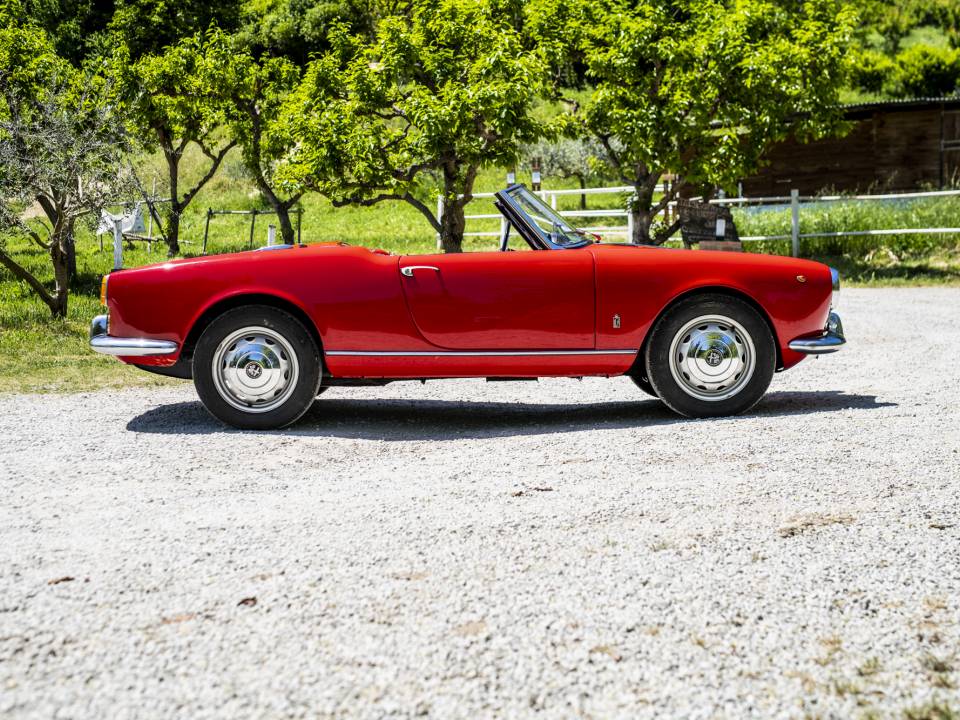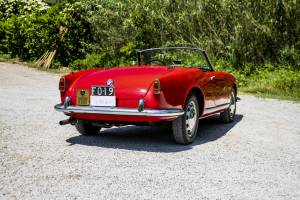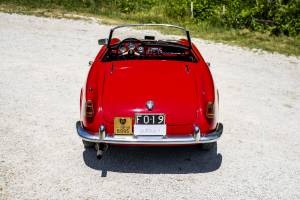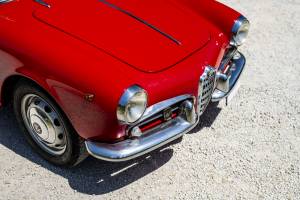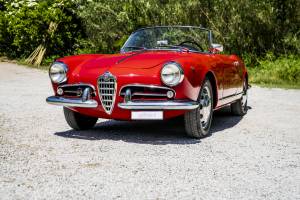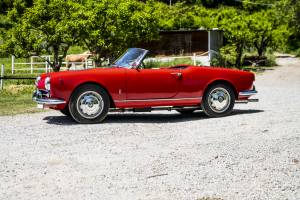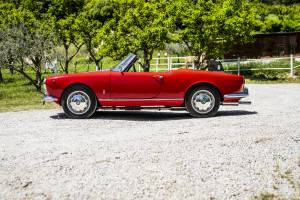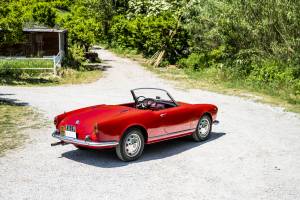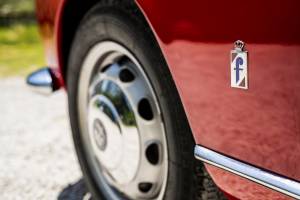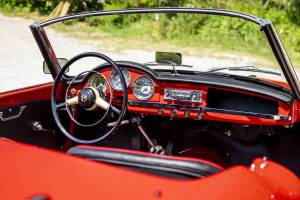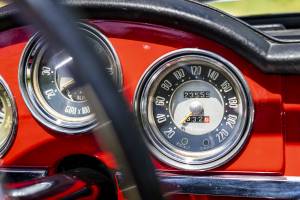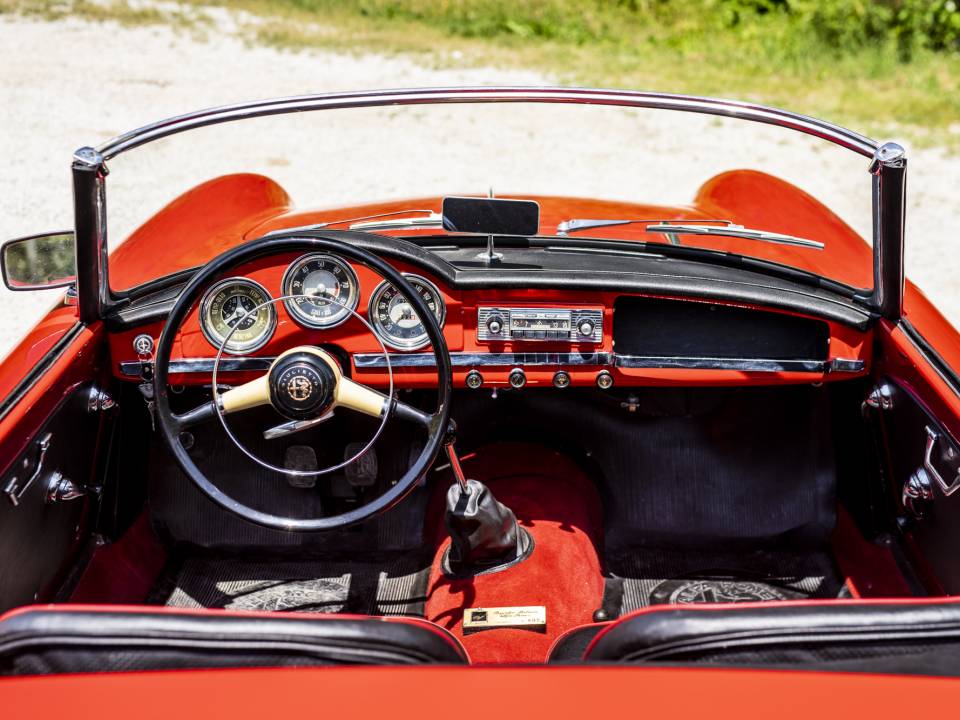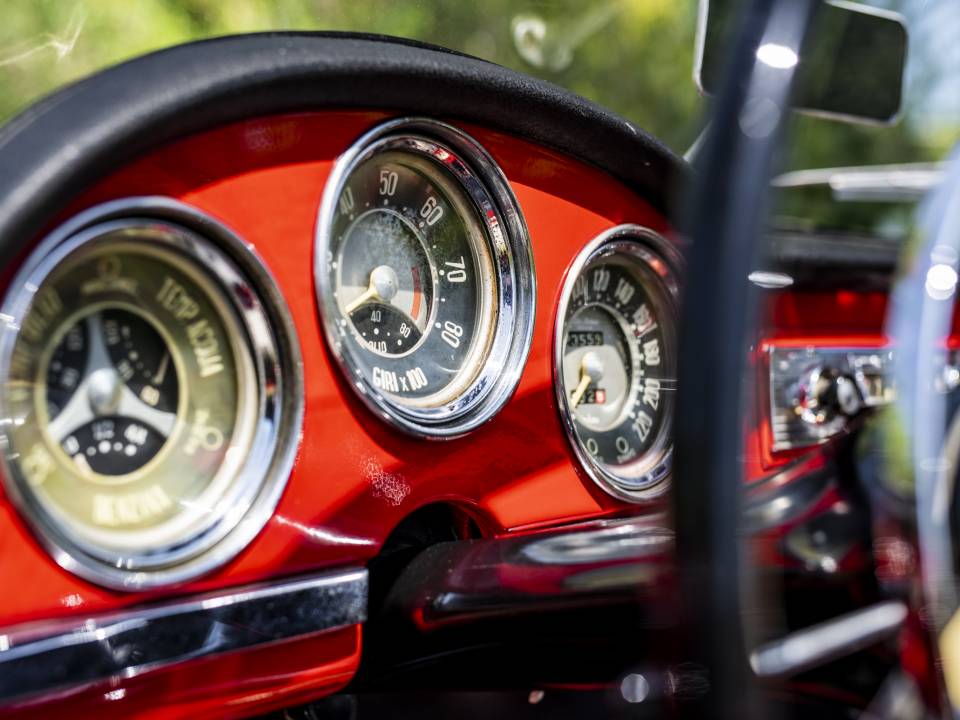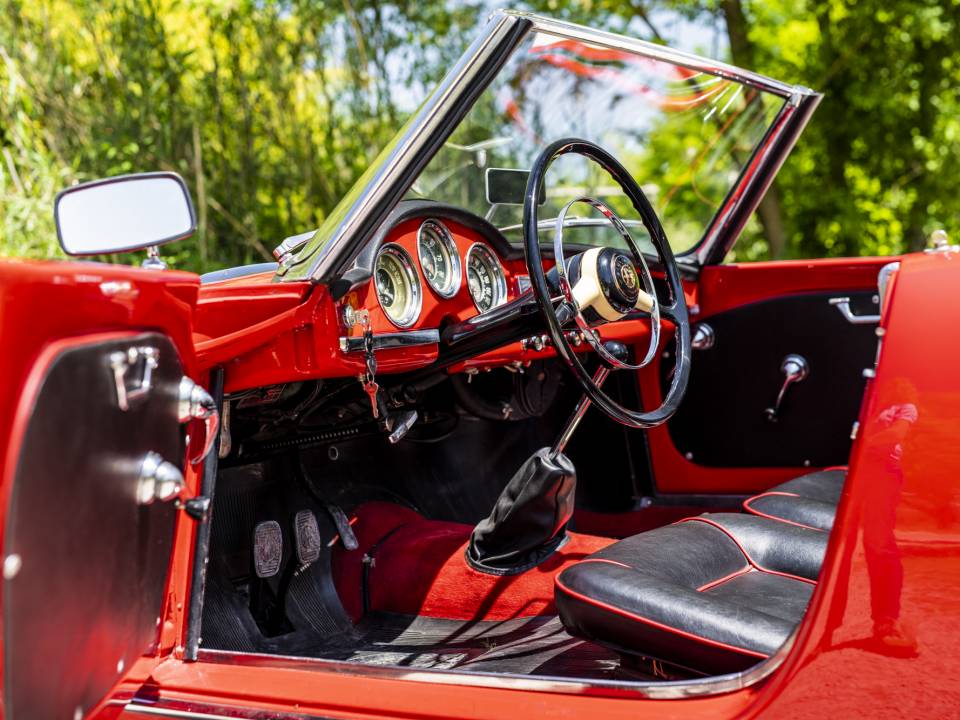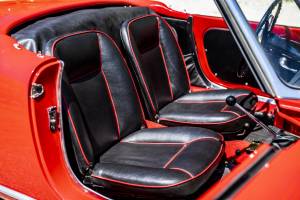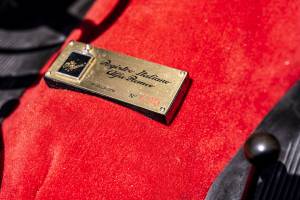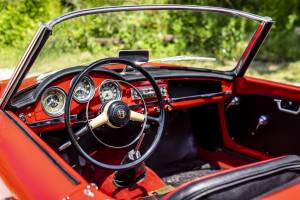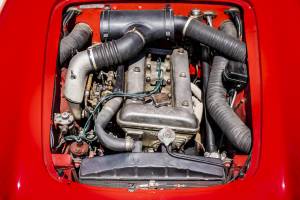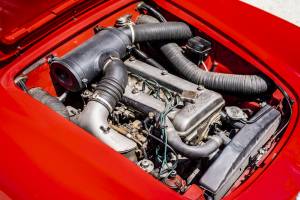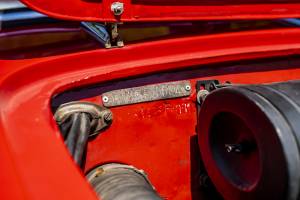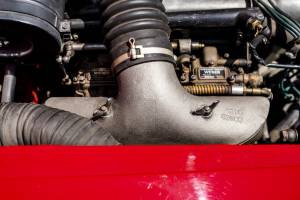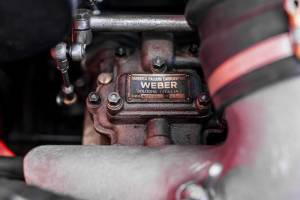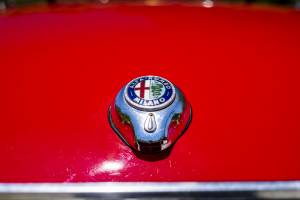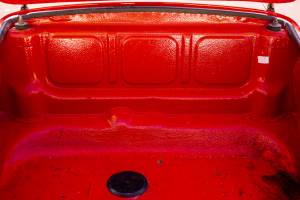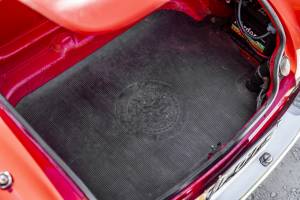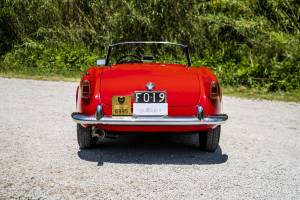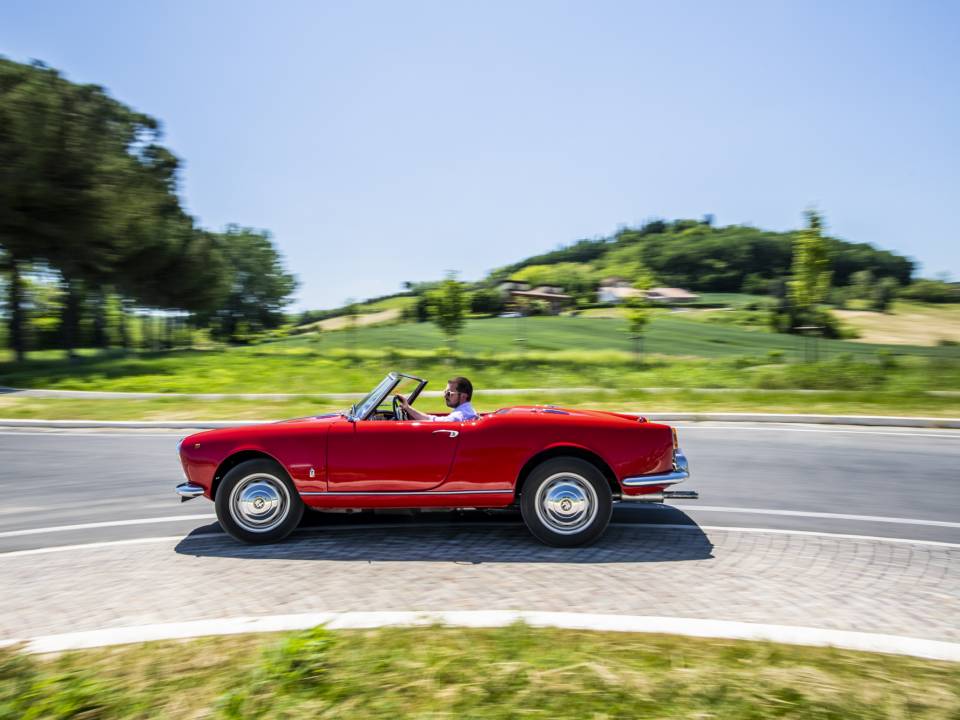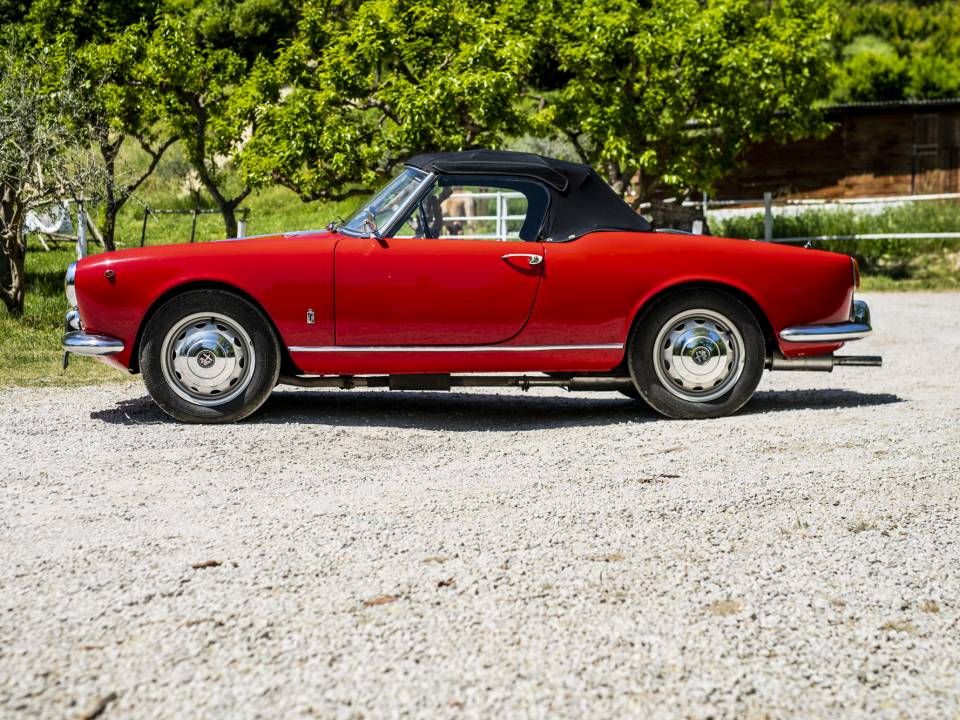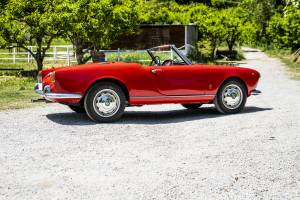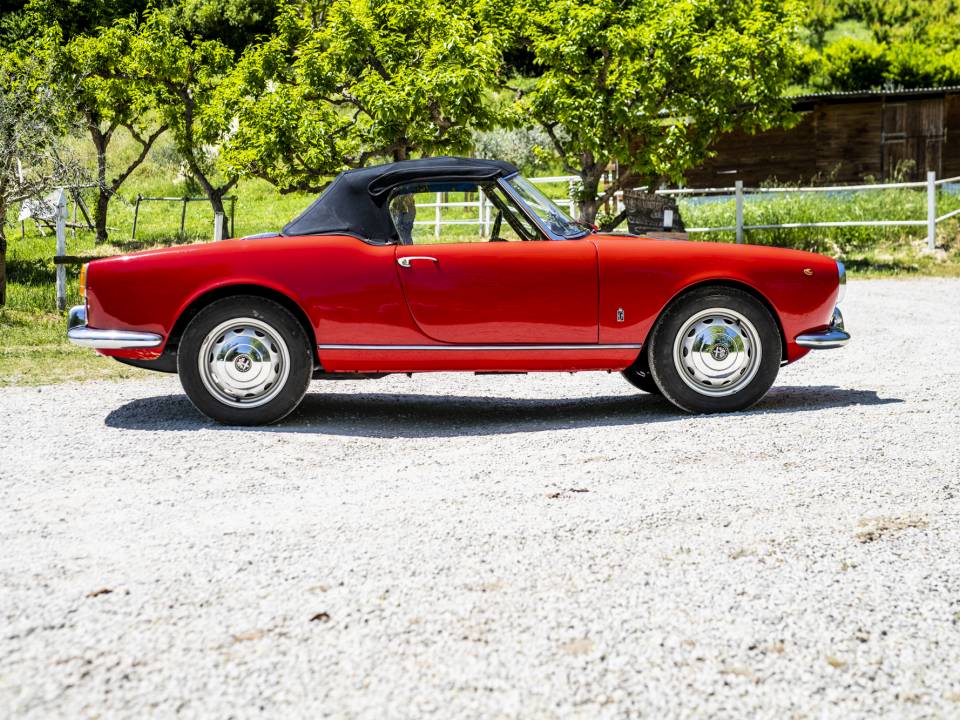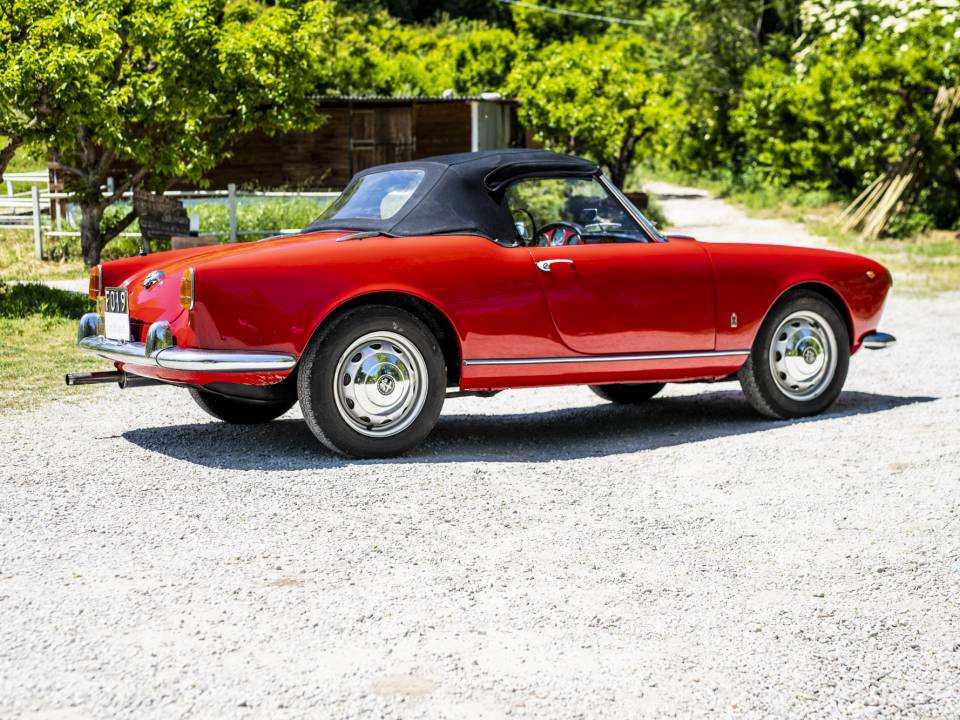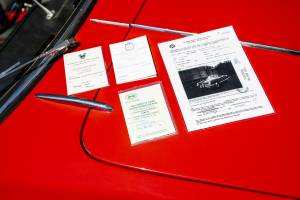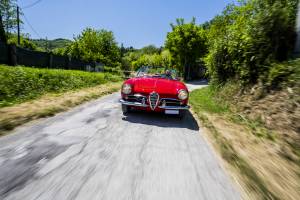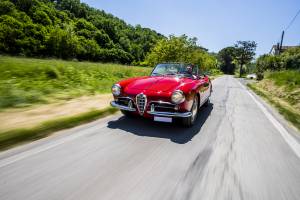1956 | Alfa Romeo Giulietta Spider Veloce
Prototype of the Veloce used by Testing department, well known example
Prototype of the Veloce used by Testing department, well known example
Description
The life of this car begins on September 20, 1956, the day of its production, with the number 194: this Giulietta Spider is an experimental car, born in Celeste color and taken from the experience department (S.E.S., Special Experience Service) for internal use, in order to test and test the nascent “Veloce”, transforming it to all effects into a “Spider Veloce”, one of the oldest still in existence, as reported in the house's certificate of origin.
After a couple of years of experimentation both on the engine with the aforementioned specifications, and on the transmission, the car was registered: on 30 June 1958 it received the first number plate - Milan -, headed directly to Alfa Romeo and was used for another year for testing. , before being sold on 24 April 1959 to Mr. Antonio Ettore Fossati from Triuggio (MI), a gentleman driver who raced around the Portello house with the Giulietta Sprint, who kept it for ten years.
The second owner bought the car on May 17, 1969 and transferred the car to Rimini (with its new license plate, Forlì), keeping it for a further 10 years before taking possession of the current property 43 years ago, precisely from January 16, 1979.
During the first two years, the parent company replaced the original equipment engine, probably just for tests and trials, also installing the new gearbox with "Porsche-system" synchro which became standard in the mid-'58. When the car was purchased in 1979, the Celeste color had already been hidden by the classic red, which is still maintained today: before the 90s when the passionate collector began to do some in-depth studies on the origin of his Giulietta Spider. , he did not know neither the singular history nor the first color of the car, which today constitutes a plus.
In terms of finishes, the car has the characteristics of the first examples: smooth seats with contrasting edges, door panels mounted with visible screws and the absence of the deflector.
Car well known among lovers of the brand, appeared in books and registered with the RIAR as well as approved by ASI. Visible by appointment in Cesena. Further details on www.gulfblue.it
Historical notes:
The American importer Max Hoffman, convinced of the success that Italian sports cars would enjoy in the U.S.A., pressed Alfa Romeo to produce an open version of the Giulietta and actually ordered six hundred examples. With an excellent design by Franco Scaglione put forward by Bertone having been rejected as it was perhaps too futuristic and demanding, the company chose the Pininfarina version, a car not particularly advanced in terms of styling, but very attractive and destined to become a symbol of an era.
Exhibited at the Paris motorshow of 1955, it was not immediately available in Italy as demand from the American market had to be satisfied first.
The Giulietta Sprint's humiliating defeat at the hands of the Porsche 356 Super, itself a 1300cc car, in the Gran Turismo category of the 1955 edition of the Mille Miglia that Alfa had intended to dominate shook the powers that be at the Portello. The company needed to produce a car for the 1956 edition capable of beating the German coupé. The great potential for development inherent in the small Alfa meant that such a task presented no particular difficulties. The resulting model was such a success that rather than simply completing the number of examples necessary for homologation in the Gran Turismo category, the firm decided to continue production of the new lightweight car into the first half of 1958. While the deliberately understated competition potential of the Giulietta Sprint had aroused widespread admiration, the Veloce version of Satta and Busso masterpiece represented the fulfilment of that potential.
The new car thus boasted outstanding performance: the engine, equipped with individual cylinder charging thanks to the fitting of two Weber 40 DCO3 twin-choke carburettors (in effect a carburettor for each cylinder), a competition exhaust system and a special sump that allowed oil to be pumped at all times, produced around 30% more power. The same partial supercharging effect obtained on the 1900 T.I was reproduced thanks to the dynamic front air intake feeding the carburettors, whilst the exhaust system was carefully designed to avoid any disturbance of the gas flow from each cylinder. The manifolds from the first and fourth cylinders converged into one, as did those from the second and third cylinders, these two pipes then converged into a single tube. As the firing order was 1-3-4-2 it is clear that the engineers intended to stagger the exhaust pulses in the converging pipes.
The experience gained with the Sprint Veloce was transferred to the Spider without however any aesthetic modifications being introduced. The car was, in fact, outwardly unchanged apart from new instrumentation graphics (the rev counter reading to 8,000 rpm and the speedometer to 220 kph).
With a compression ratio of 9:1 and the Weber twin-choke cars, the power rose up to 90 hp with a top speed of 180 kmh: those performances prought the Spider veloce on top of the list of the spiders of the time.
The chassis were taken from the Spider series and the Veloce was therefore not given its own specific numbering sequence. The letter F was, however, stamped close to the chassis number. The engine numbers were included in the sequence relating to the identical Spider Veloce power unit. Two Weber 40 DCO3 carburettors were fitted, together with the competition exhaust system, a dynamic induction air intake and a multiple piece light alloy sump with extremely sophisticated baffles ensuring that the oil pump was able to scavenge in all conditions of use. No measures were taken to lighten the car, and with the two carburettors and the larger air filter and sump the Spider Veloce actually weighed 5 kg more than the standard Spider.
Source: “Alfa Romeo, le vetture di produzione”, Stefano d’Amico, Maurizio Tabucchi, Giunti-Nada.
Photos credit: Rémi Dargegen
Vehicle details
Vehicle data
- Make
- Alfa Romeo
- Model series
- Giulietta
- Model name
- Giulietta Spider Veloce
- Manufacturer code
- Tipo 750
- First registration date
- 09/1956
- Year of manufacture
- 1956
- Mileage (read)
- 10,000 km
- Chassis number
- Not provided
- Engine number
- Not provided
- Gearbox number
- Not provided
- Matching numbers
- No
- Number of owners
- Not provided
Technical details
- Body style
- Convertible
- Power (kW/hp)
- 66/90
- Cubic capacity (cm³)
- 1290
- Cylinders
- 4
- Doors
- 2
- Steering
- Left (LHD)
- Gearbox
- Manual
- Gears
- 4
- Transmission
- Rear
- Front brakes
- Drum
- Rear brakes
- Drum
- Fuel type
- Petrol
Individual configuration
- Exterior color
- Red
- Manufacturer color name
- Rosso Alfa
- Folding roof
- Yes
- Interior color
- Black
- Interior material
- Imitation leather
Condition, registration & documentation
- Condition category
- Restored
- Has Report
- Condition
- Book inspection report
- MOT
- Historical license plate
- Registered
- Ready to drive
- FIVA
